It's a frequent topic on a lot of climbing sites, but SP does not seem to have an article or major forum thread on the subject, so here is my offering.
Disclaimers:
- Roped solo is more dangerous than climbing with a partner is. If you get hurt or if the route is too hard, you are on your own.
- Because of the extra effort involved, roped solo can feel half or a full grade harder than the route's rating. Going at your limit, or pushing it, is unwise.
- You must have a clear understanding (which includes building know-how) of top anchors, ground anchors, and multi-directional anchors.
- My methods are safe and proven but are not the only ones out there; you must decide what works best for you considering your skill level and your budget.
I'm going to cover solo toproping, solo leading, and solo multi-pitch.
Climbing solo can be a pain, but once you have the gear and the know-how, you will never again have to stay home because your partner is unavailable, take your chances with a stranger, settle for bouldering instead of actually getting a few yards off the ground, or, worst of all, go hiking instead of climbing.
Plus, you will become a minor celebrity as curious climbers gawk and ask questions and assume you are some kind of climbing god, or at least a demigod, even though you're not. This might also make you irresistible to model-quality members of the opposite sex. Or even the same sex; hey, it's 2017.
To date, it hasn't helped me score with chicks, and my wife approves of that, but if it helps you get a chance to hop into the sack with someone hot, yeah!
Solo Toprope
This is the one about which people most often ask.
If you can do this, you can go out whenever you want and climb for sheer fun or work on something hard, as long as you can extract yourself from something too hard by climbing the rope or getting back down. Anyone not knowing safe self-extraction techniques should either stop reading right now and go learn some or commit to staying well below his/her limit; dangling in space several feet below an overhanging crux is not the time to figure out self-extraction, which can be quite tedious.
This begins with the assumption that you know how to build a redundant, equalized top anchor. If you don't, stop reading right now and go take a course on building anchors.
Now that we've weeded out some of the readers, ask yourself the following:
- Does the crag have fixed anchors? Do I have the cord/biners/draws for a TR setup?
- If the crag has boulders and/or trees up top, do I have enough webbing and/or cord to make an anchor?
- If there are no fixed anchors and boulders/trees are sketchy or nonexistent, do I have the gear necessary to build an anchor using trad pieces?
Again, this article is not about how to make anchors. If you can answer "Yes" to one of the above and it applies to your crag, then read on.
Otherwise, go away! You're gonna die!
My TR-solo system is not based on whims and experiments but rather on Petzl's website.
See here.
Petzl covers several options. None is perfect, but some are better than others.
The best: a single dynamic rope, tied so as to make two independent strands, with two self-belay devices.
Grab your rope at the middle. Pull it for several feet and then fold it over on itself (you've made a double bight). Now tie a Figure 8. You should have two loops, and they create two independent strands from the one rope. If possible, clip each loop to both carabiners at the master point. If not possible, clip a loop to each anchor. Redundant.
![Anchor End of Rope]() Anchor End of Rope
Anchor End of Rope
At the bottom, take a Petzl Micro Traxion (some use a Mini, but it has been discontinued) and attach the rope to it. (The Petzl page recommends a Micro or an Ascender, but the latter can be really hard to remove from the system when topping out or getting ready to rappel. However, it does work.) Clip the device to your belay loop; an anti-crossloading biner like the Black Diamond Gridlock is the best, in my opinion, but there are other "ACL" biners out there as well, and they probably work well; ovals work pretty well, too, while D and HMS biners do not. With a carabiner and a clove hitch or overhand on a bight, weight the rope a few feet off the ground with a shoe, pack, water bottle, or whatever; this will ensure smooth rope feeding from the very start. For extra efficiency, use a chest harness or a loop of webbing improvised as a chest harness, plus a carabiner and a thin cord, to hold the Micro Traxion high. This not only helps the feeding but also keeps it out of the way of your backup device.
![Micro Traxion]() Micro Traxion
Micro Traxion
Some hesitate to use Traxions or Ascenders because they fear the teeth will damage the rope in a fall, but this is not the case as long as it is your primary device and it is feeding smoothly. Do not use one as a backup device when climbing on two strands; if the primary fails, then you will shock-load the secondary, and then the teeth could damage the rope. Note: some people ask if a Tibloc is acceptable; Petzl makes it very clear that it is not for rope soloing, as it actually can shred ropes.
Your backup device is the Petzl Microcender. (I swear I do not work for Petzl or own stock in it.) Attach it to a locking carabiner that goes through your tie-in points. I use a dogbone to extend it so that it will be out of the way of the primary device, but that might not be necessary if you're using a chest harness to elevate your primary. Now attach it to the other strand. Weight it. Note: the Microcender has been discontinued. If you can't find one, consider Petzl's Rescucender, which is larger and heavier but works much the same way, via a toothless cam. There are other toothless camming devices out there as well. Because the Microcender is so small, light, and easy to operate, it is a great device for soloing.
![Microcender]() Microcender
Microcender
In every aspect, your system is redundant. I would say there is zero chance the system can fail, but anything can fail given the right combination of crazy, so I will just say this system is about as bomb-proof as it can get. Personally, I think it is safer than climbing with a partner because a partner can drop you and that single rope can fail.
Double-check that everything is set up properly. One time, I was climbing with a single ascender, and as I topped out, I realized, to my horror, that I had forgotten to engage the toothed cam; thus, I was free soloing. When doing Solo TR, user error, not gear failure, is the greatest risk. So double-check!
Now climb.
At the anchor, you face another decision: top out or descend. If you top out, you need to know and accept that if you fall, you will shock-load the anchor. This can cause anchor failure and/or serious injury. If you descend, you need gear for anchoring yourself, releasing the rope, rigging a rappel, and then descending. You must know how to do this before you set out, and this article is not going to cover that.
If you want to top out and avoid the risks of shock-loading the anchor, it is often possible to build your anchor above the top-out (i.e. back from the top of the cliff), but then you have to protect the climbing rope where it goes over the edge. This is doable, and it is what I usually do, but again, this article is about the basics of roped solo, not the finer points.
Solo Leading-- One Pitch
Are you sure you want to do this? There is much that can go wrong, and you will be on your own.
There are several ways to lead trad/sport solo. Probably the most common is with a Grigri orientated "upside-down" (climber strand goes to ground anchor). That does work, but it does not self-feed, and thus the process is really tedious. Example: after you clip a bolt on a sport route, unless you feed the rope as you go, which is a big hassle, you might have to self-feed enough rope to get you to the next bolt. Thus, if you fall, you fall that whole length x2, and that could mean decking.
There is a way to modify a Grigri to address the feeding issue, but it is complicated. And the Grigri can come open, meaning disaster; I remember watching a video of a guy solo-leading with a Grigri and being completely unaware that the cam had opened, meaning death if he fell.
Update 5/2/19-- I have learned some ways of getting a Grigri or a Mad Rock Lifeguard to feed better. The simpler one to explain starts by taking a couple armlengths of slack from the loose end and cloving the resulting loop to a non-locker on your harness. Then repeat so there are two loops. As you climb, the rope from the loops should feed smoothly through your device. Downsides: the loops can snag on features; when you run through a loop of slack, you have to remove the clove from the carabiner; and on anything more than 30 or 40' you will need to make new loops. But it works.
Another way to lead solo is via a clove hitch on two lockers attached to your harness. This process is slow and tedious, as you always have to loosen the clove to free rope to climb with, and it introduces the same fall issues that the Grigri does. I've heard that it's not too bad if you're aiding, but for trad or sport, it's awful.
A respected member of other climbing sites uses an Edelrid Eddy and swears by it. I tried his system but didn't like it; getting the right setup for smooth feeding is not easy, and if you don't get it, the device doesn't feed at all.
Update 5/2/19-- Wild Country has come out with a belay device called the Revo that some have taken to calling a poor man's Silent Partner (though it is not cheap at almost $150 retail). Although it does not operate the same way the Silent Partner dowa, it is similar in form and concept, and it locks up under speed. Wild Country does not market the Revo as a lead-solo device, but many climbers, including me, have used it and had good results. One of the most respected members on what is probably the world's most heavily used climbing forum has done extensive testing on the Revo and found it to be reliable and durable. I may post a future article here on the Revo and its functions.
To date, there have been only two devices specifically made for solo leading on trad or sport lines: the Soloist and the Silent Partner, formerly by Wren and later by Rock Exotica.
Bad news: Rock Exotica has discontinued both devices, apparently because there just aren't enough people wanting them to justify the production and marketing costs. If you want one, prepare to pay more for a used one than you would have for a new one. And not too many people are selling them. Not too many own either in the first place. Already, I have seen a Soloist (new price about $125) go for 180 on eBay, and I have seen a Silent Partner (new price about $225) go for 300.
Update: recently, a used Silent Partner went for about 1400 USD on eBay.
Because I own both, I can comment about their advantages and disadvantages.
Soloist
Advantages:
- Small (in comparison).
- Easy to set up.
- Locks up right away when loaded. This means you can rest on bolts or gear.
- Can be used to rappel.
- Higher clip-in point.
Disadvantages:
- Requires a chest harness.
- Will not hold an upside-down fall and may not hold a fall on low-angle terrain such as a Class 3 slab or outcrop on an alpine route.
- Unless you rappel with it, which is a little complicated, it can be a hassle to switch to lower or rappel. (I have figured out an easier way to rappel without taking the device off the rope, but it is dangerous, I rarely use it, and I will not describe it.)
- Because of how it attaches to your harness (see below), the Soloist pretty much has to stay attached to your harness all the time, so you probably need a separate harness just for your Soloist.
- Easy to set up the wrong way, rendering it completely useless.
![Soloist]() Soloist Rigged Correctly Soloist Rigged Correctly |
![Soloist]() Soloist Rigged Incorrectly-- You are asking to die if you fall on this setup. Soloist Rigged Incorrectly-- You are asking to die if you fall on this setup. |
The Soloist attaches to the tie-in points via a loop of cord (7 or 8mm) and to the chest harness (or sling) via a locking carabiner.
Make sure the anchored end of the rope comes out of the bottom. To help with feeding, some climbers coil the free end of the rope into a backpack, with the free end running over a shoulder and kept orientated by a carabiner. If the route is longer than half the length of your rope, tie the unanchored end to your harness or your pack; this will prevent the rope from self-feeding all the way through the device and rendering you a free soloist for the remainder of the pitch. The user's manual covers other ways of avoiding this problem.
To back up the system, pre-tie knots into the free end, using intervals of your choosing. Usually, an overhand on a bight is sufficient; it is big enough to jam in the device should the device fail to lock up. This method is simple, but it does require untying the knots as they reach the device. Alternatively, you can make clove hitches and attach them to lockers on your harness; this allows a quick, easy release, but it also means that big loops of rope will be hanging from your harness.
Silent Partner
Advantages:
- Will hold an upside-down fall.
- Does not require a chest harness.
- Feeds better, in my opinion.
Disadvantages:
- Bulky and heavy.
- Harder than the Soloist to set up.
- Harder than the Soloist to back up.
- Locks up after speed, making a fall longer and scarier, and no resting on gear or bolts unless you really have this thing dialed.
- Hangs low, requiring clips below where desired or stopping to pull lots of line to make a high clip when protecting a scary move.
- Can be difficult when switching to lower or rappel. You actually can rappel with the SP, but it essentially means falling and being caught. Sketchy, and it can't be good for the rope.
- Anecdotally known to fail in cold/icy/wet conditions.
The climber attaches the Silent Partner to his/her tie-in points via two large locking carabiners. Before that, one must tie a large clove hitch and place it over the drum of the device. Careful reading of the user's manual is essential, as the slightest mistake in set-up will block the device from feeding (a good thing, though, when you think of it).
For the Silent Partner, the backup system is the above-mentioned one of cloves on lockers, with big loops hanging. It is a hassle and it creates clutter, and many people skip the backup, though I will not formally recommend that.
Unlike the Soloist, which has one end of the rope running though the top and the other running through the bottom, the Silent Partner has both the free and anchored ends running from its sides, so it is just a little important to know for sure which side is which. My recommendation is to set things up so that the clipping strand is on the side of the hand with which you usually clip.
To help with feeding, some climbers coil the free end of the rope into a backpack, with the free end running over a shoulder and kept orientated by a carabiner. If the route is longer than half the length of your rope, tie the unanchored end into your harness or your pack; this will prevent the rope from self-feeding all the way through the device and rendering you a free soloist for the remainder of the pitch. The user's manual covers other ways of avoiding this problem.
Preferences
This is totally subjective, but I like the Silent Partner better for trad and the Soloist better for sport.
On trad, I don't solo-lead at my limit, meaning I'm not likely to rest on a piece, and I like the SP's better feed. On sport, if I'm at my limit or pushing it, I like that I can just lean back and rest if I need to when using the Soloist.
If you're smart when solo-leading and staying well below your limit whether it's trad or sport, the SP is really the superior device because it is safer.
Going Up
Build a bomber ground anchor as close to the wall as you can. Although a belayer and his/her belay loop and device represent single points of failure, you are on your own here, so make your anchor redundant in every way if possible. If you can't get your anchor on or really close to the wall, then set a directional as close to the bottom of the route as you can; this will help prevent the dreaded "zipper" effect in which the tension on the rope pops pieces out one by one. Obviously, this is not a worry on a sport route, but you still want the rope to run as straight up as possible; that makes feeding and management easier, and it makes falls shorter and safer.
![Ground Anchor]() Ground Anchor
Ground Anchor
For example, on one trad climb I have solo-led, there are no good ground anchors, but the crack goes all the way to the ground. To manage that, I put two cams, stems up, into the bottom of the crack, and then I make the anchor.
Climb.
Getting Down
Whether you've climbed a sport or a trad route, you are going to have to descend the route and perhaps reclimb it in order to clean your anchor and your gear.
At the top of the climb, anchor in. If there is a fixed anchor, set up to rappel. You MUST have the gear and the know-how for this. If you have a GriGri or other assisted-braking device, you can probably just rap down the free strand, clean your gear, and be done. If you have an ATC or something like it, you can still rap and clean if you back it up; there are many ways to do this, and I'm not going to cover them. If you can't back up the rappel, then you're better off rappelling down the free end, re-ascending it via a Solo-TR method, cleaning gear during the re-climb, and then rappelling back down.
But maybe you have to build an anchor up top using gear or natural features. In that event, you will have to do a second climb of the route unless you can clean the route on rappel, hike back to the top, and then clean the anchor.
This leads to the question of what to do if climbing a single-pitch route without fixed anchors and a walk-off. DON'T, unless you plan to leave gear behind.
Another question is what to do if the pitch is longer than half your rope and you only have one rope. Assuming you don't know some of the convoluted ways for dealing with this rappel situation, I'm going to recommend tying a BFK at one end of the rope so that it jams up against the anchor's carabiners (not using lockers in this case is asking for trouble), and then rapping down on a single strand. Obviously, this is a poor strategy for rope retrieval if there is no walk-off unless you're willing to gamble that the weight of the BFK will override the weight of the rest of the rope, letting the BFK end drop after untying. (That still doesn't solve the issue of potentially lost gear.)
Solo Leading-- Multi-Pitch
This is basically the same as single-pitch solo trad, only that there is more climbing involved and you are in even bigger trouble if you get hurt or find yourself in over your head.
Knowledge of multi-directional anchors is essential; even if the route has bolted belays, you don't want to get three pitches up, find bad bolts, and not know what to do.
For sport, yes, those bolts may be all you can use, anyway, but for trad, you must have the gear and knowledge for making multi-directional anchors.
Set up and climb as described above. After each pitch, you will have to rappel back down. Then you will have to climb the pitch again, solo-TR style, and clean the gear. If you clean on rappel, you still have to re-climb the pitch and must have the gear and knowledge to self-belay.
Since you will climb each pitch twice and rappel each one as well, you need to plan on being out at least as long as you would be with a partner. Generally, I plan for an hour per pitch and usually beat that schedule, but you must plan based on your own speed and experience level.
Practice!
Even if you're a 5.12 trad leader, spend lots of time on easy stuff before you get on anything where there's a reasonable chance of your falling. Get to know your systems and your devices. As I mentioned much earlier, dangling in the air beneath an overhang is not the place to learn how to escape the system and make the transition to rappel.
Be safe and have fun!


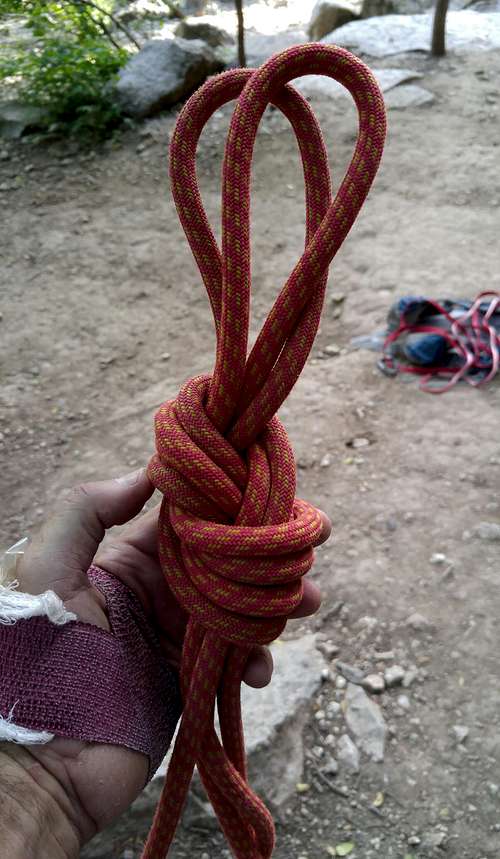
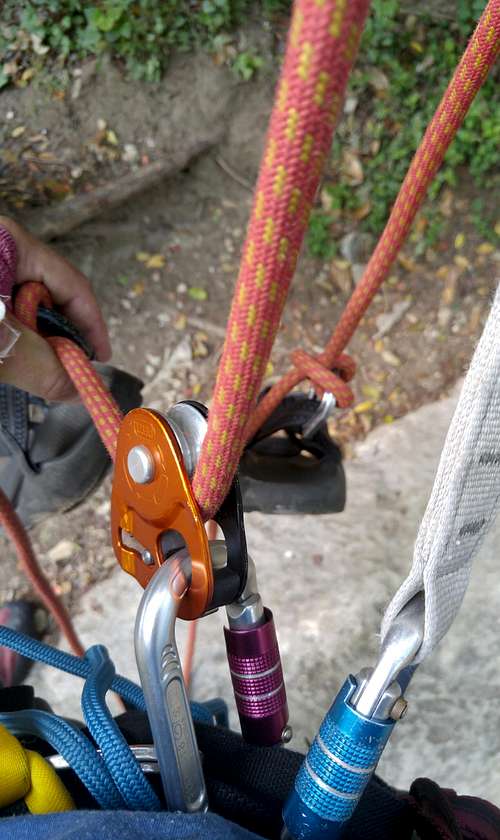
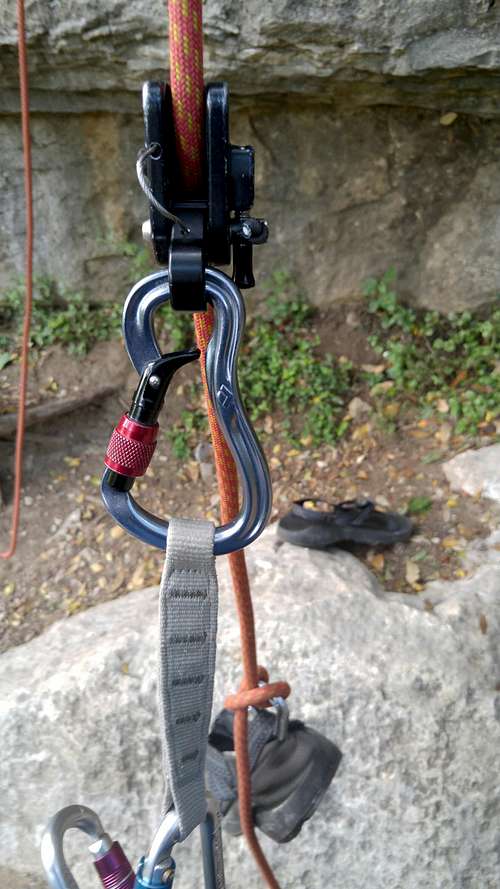
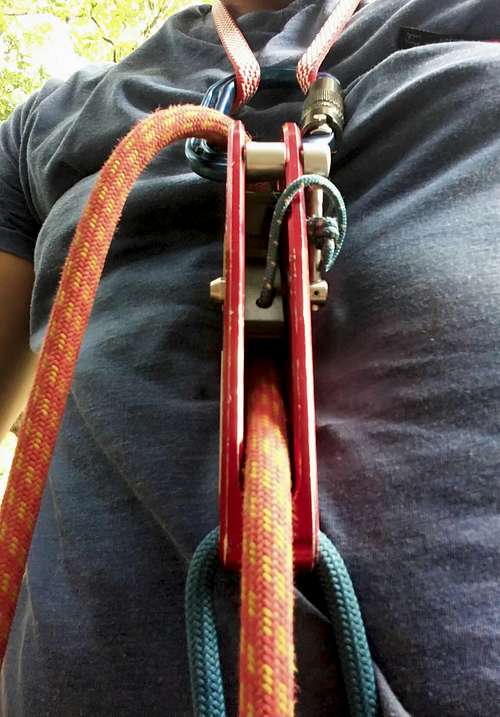
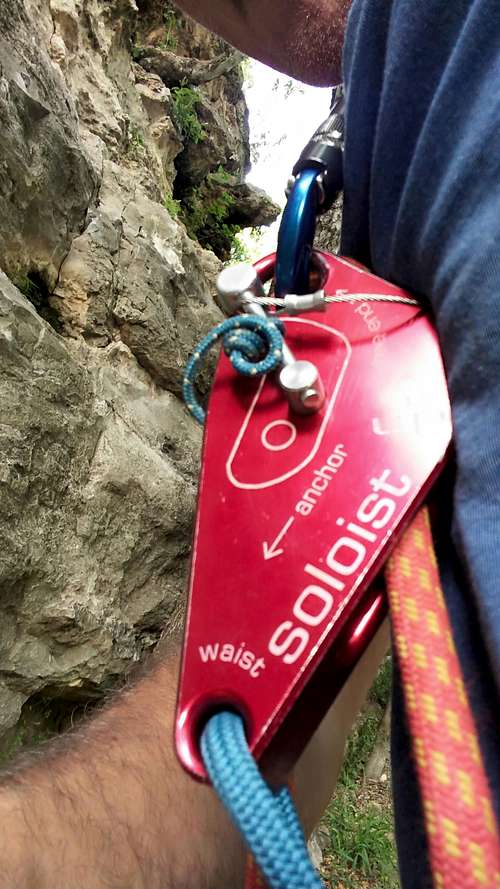
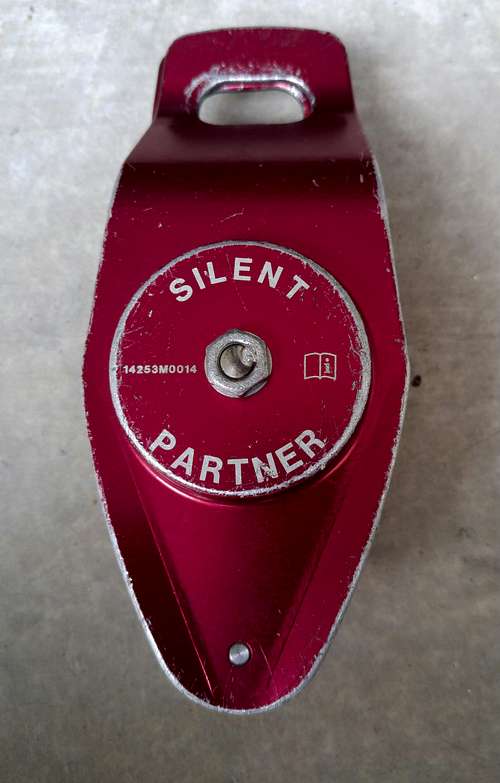
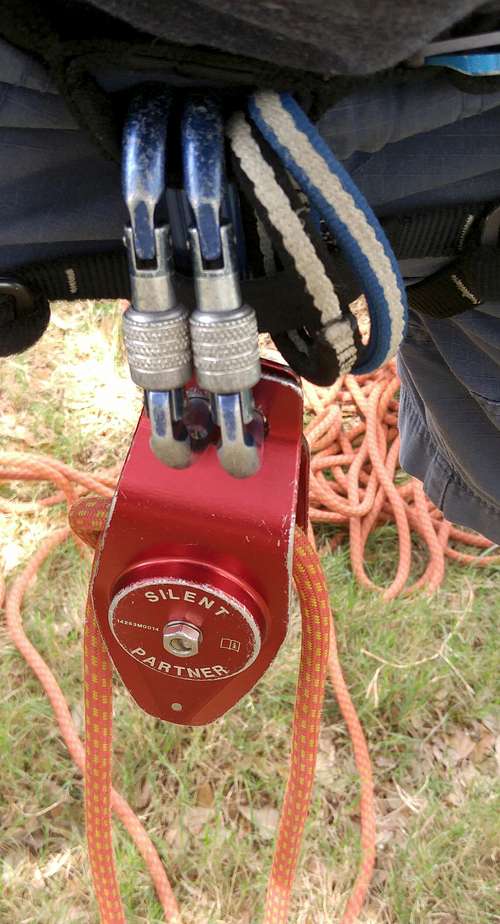
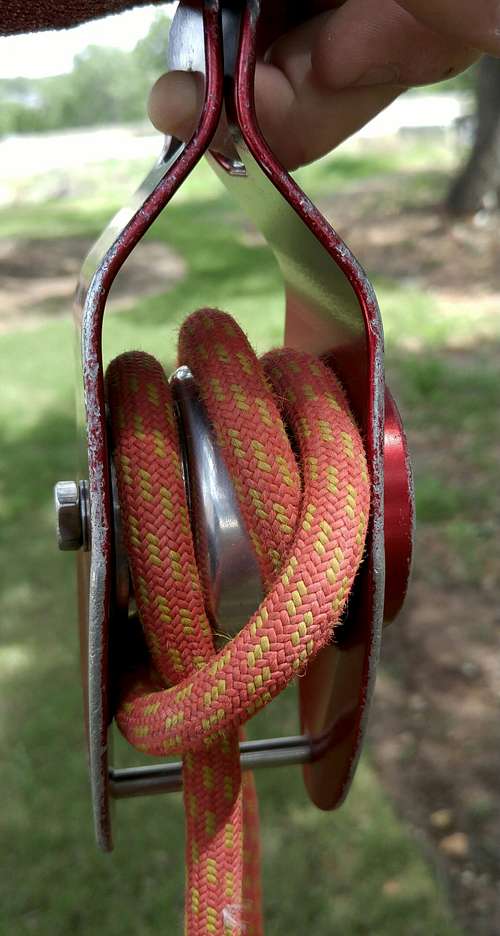
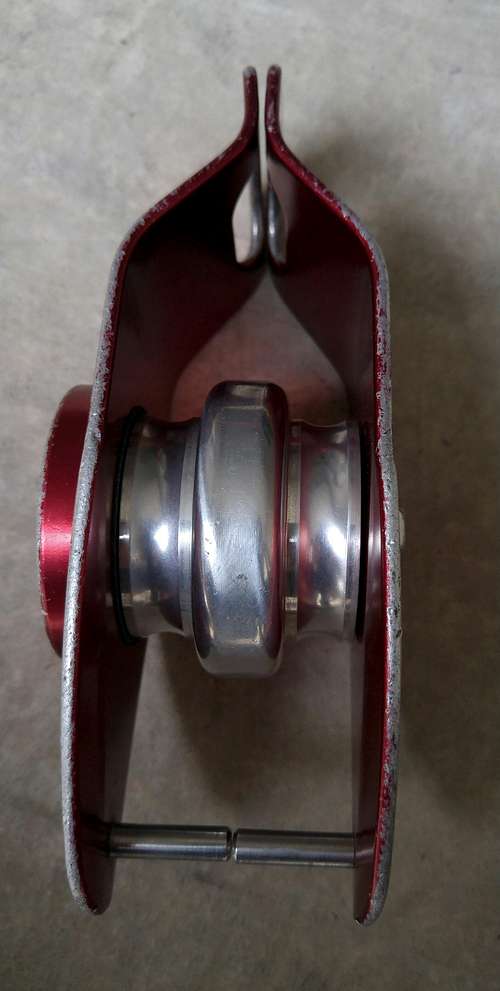
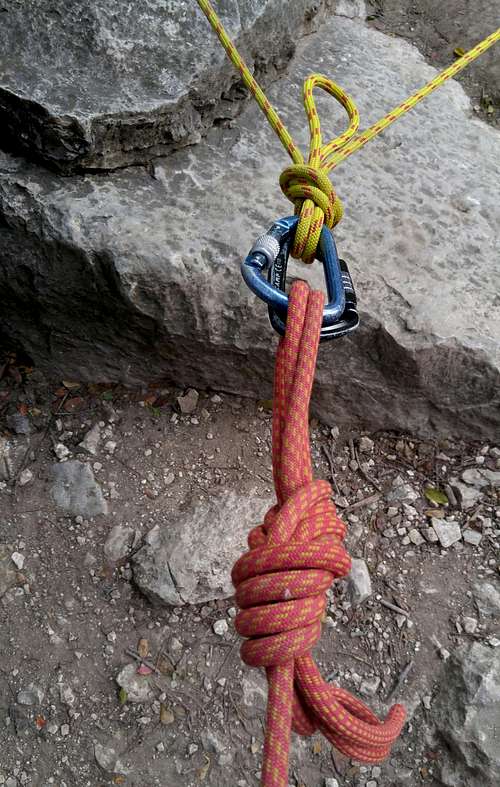



Comments
Post a Comment